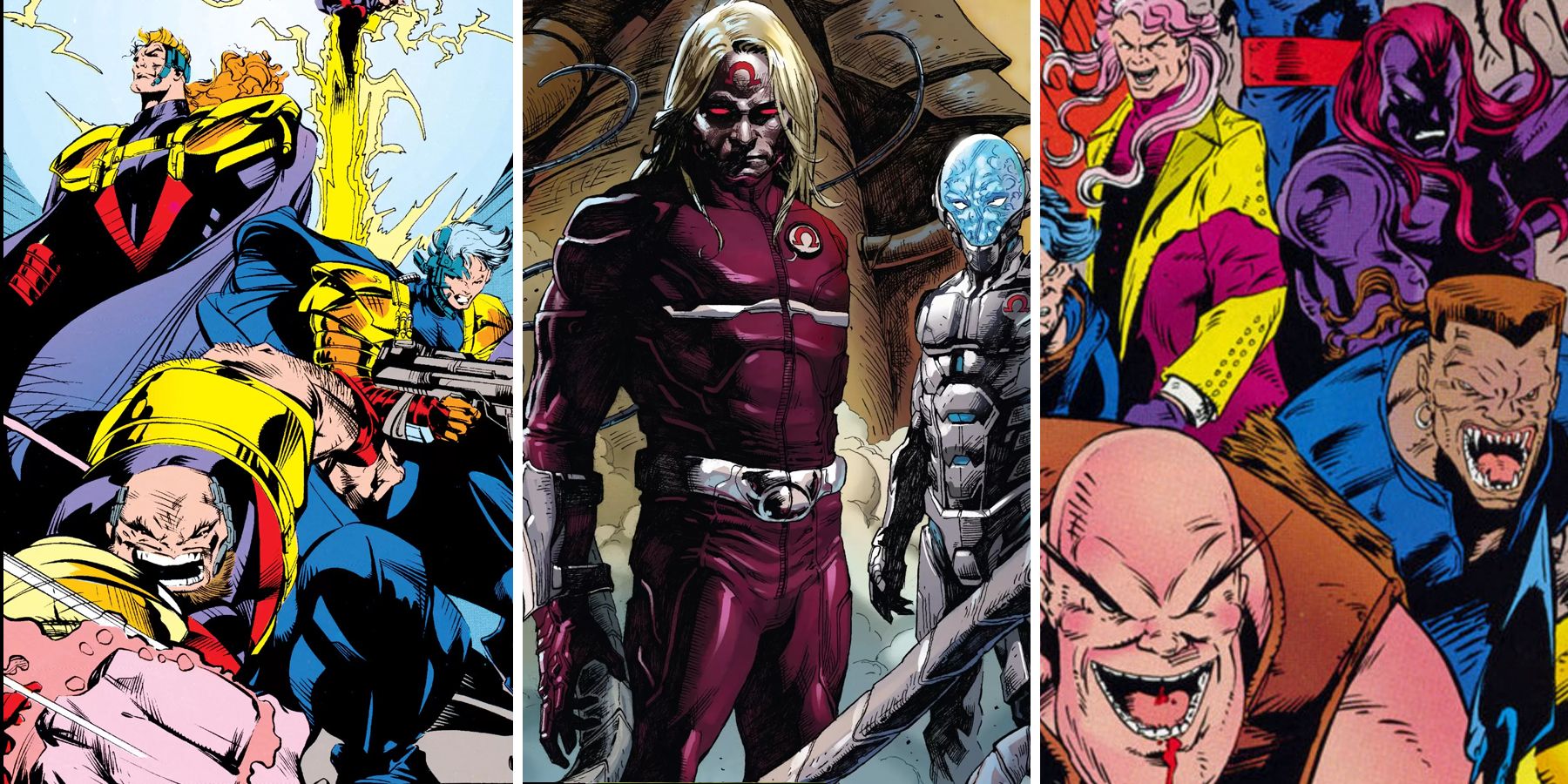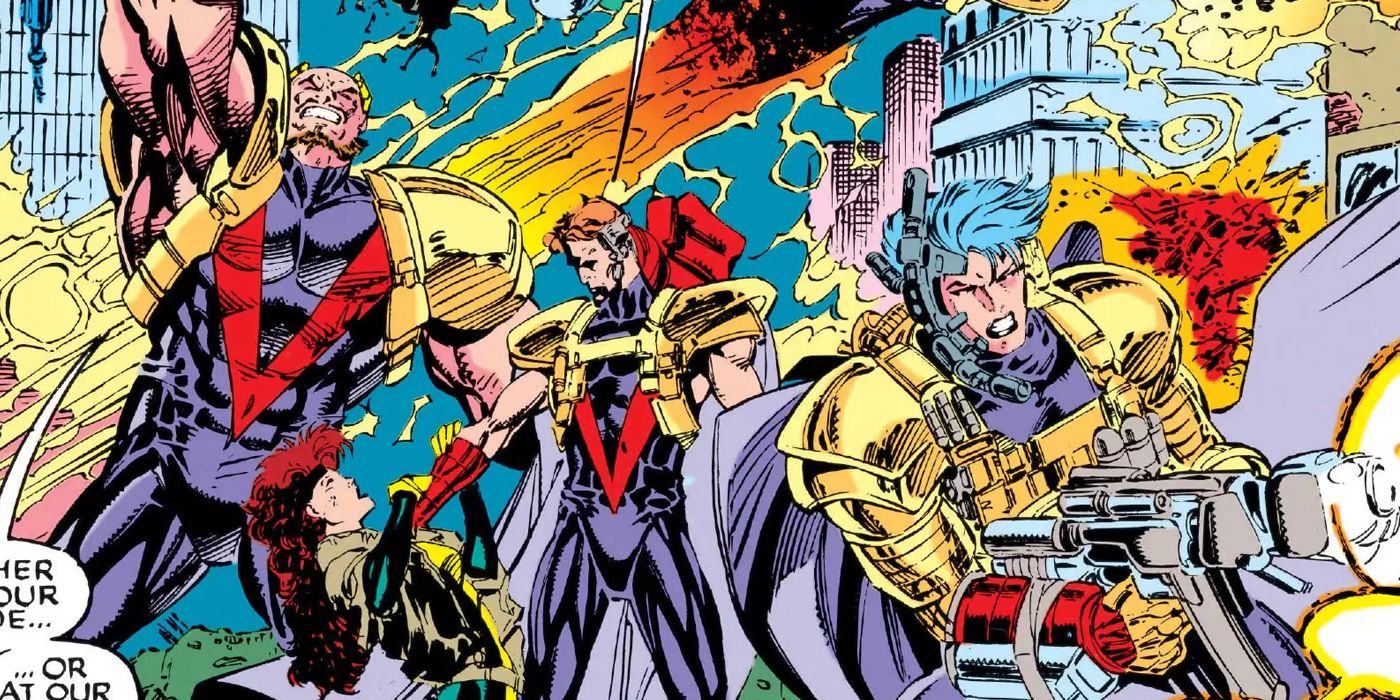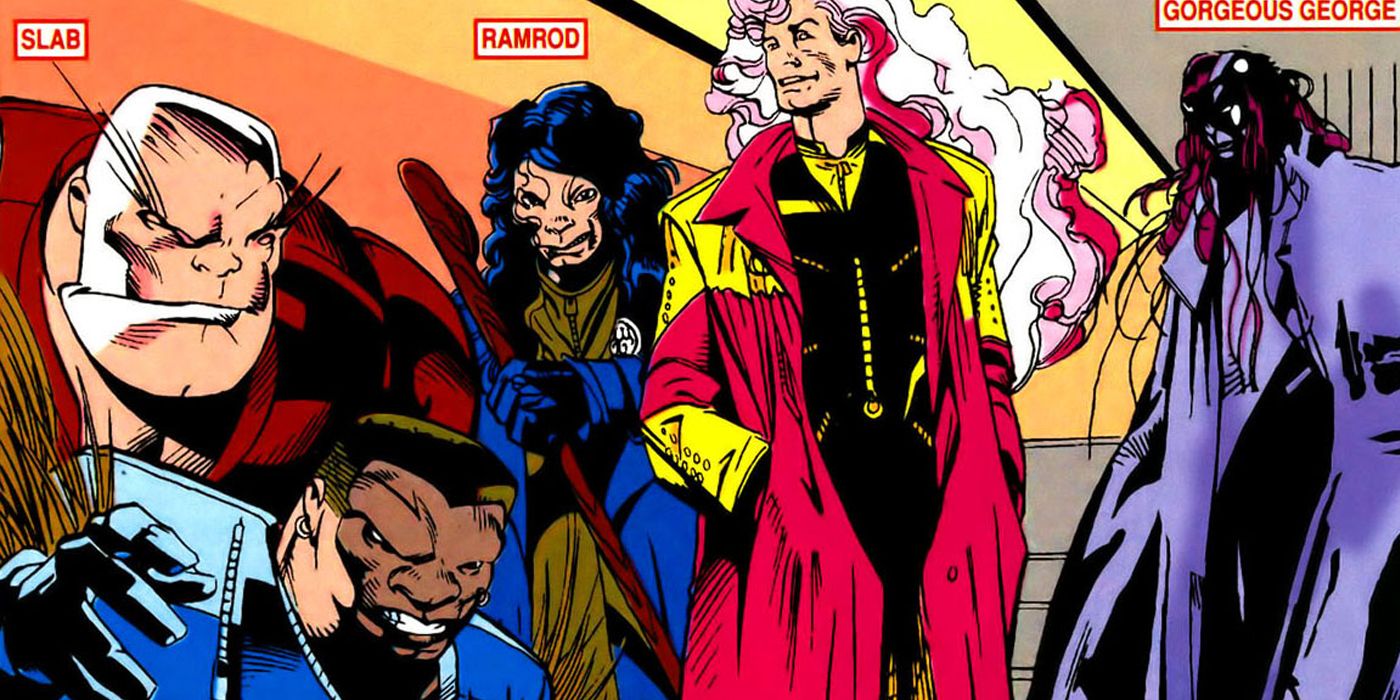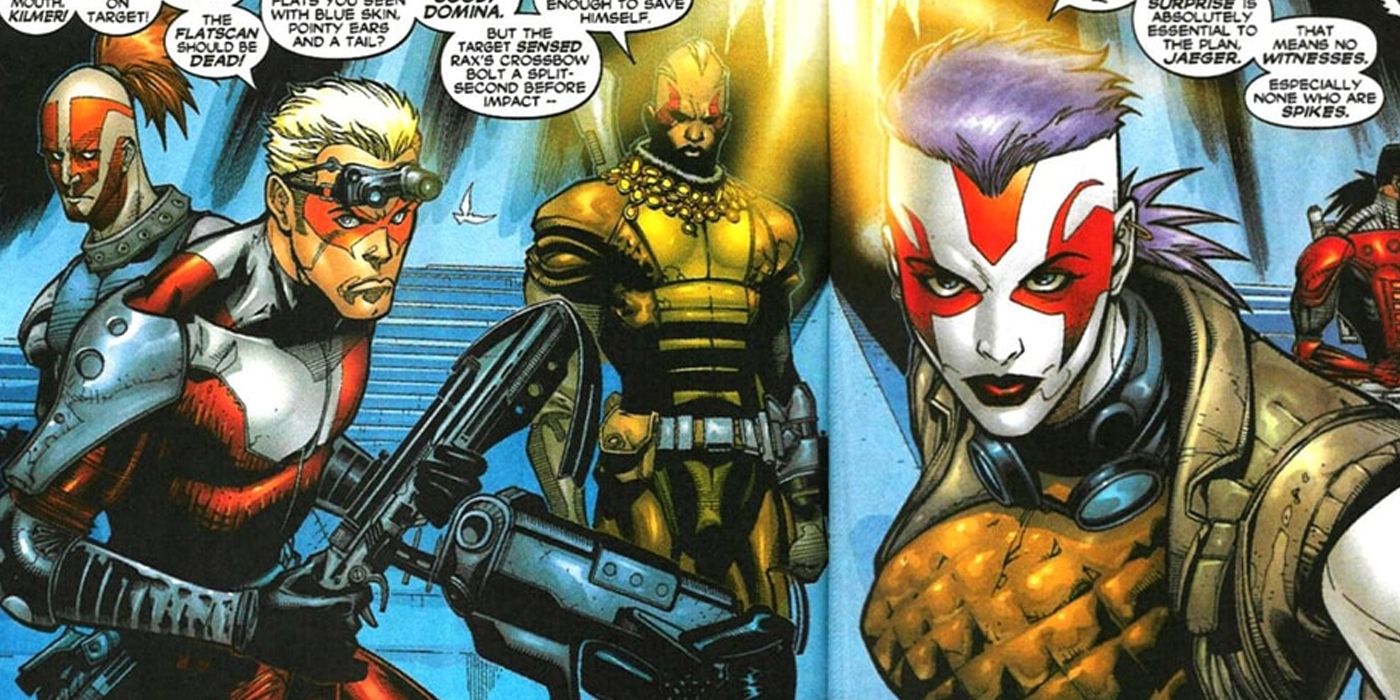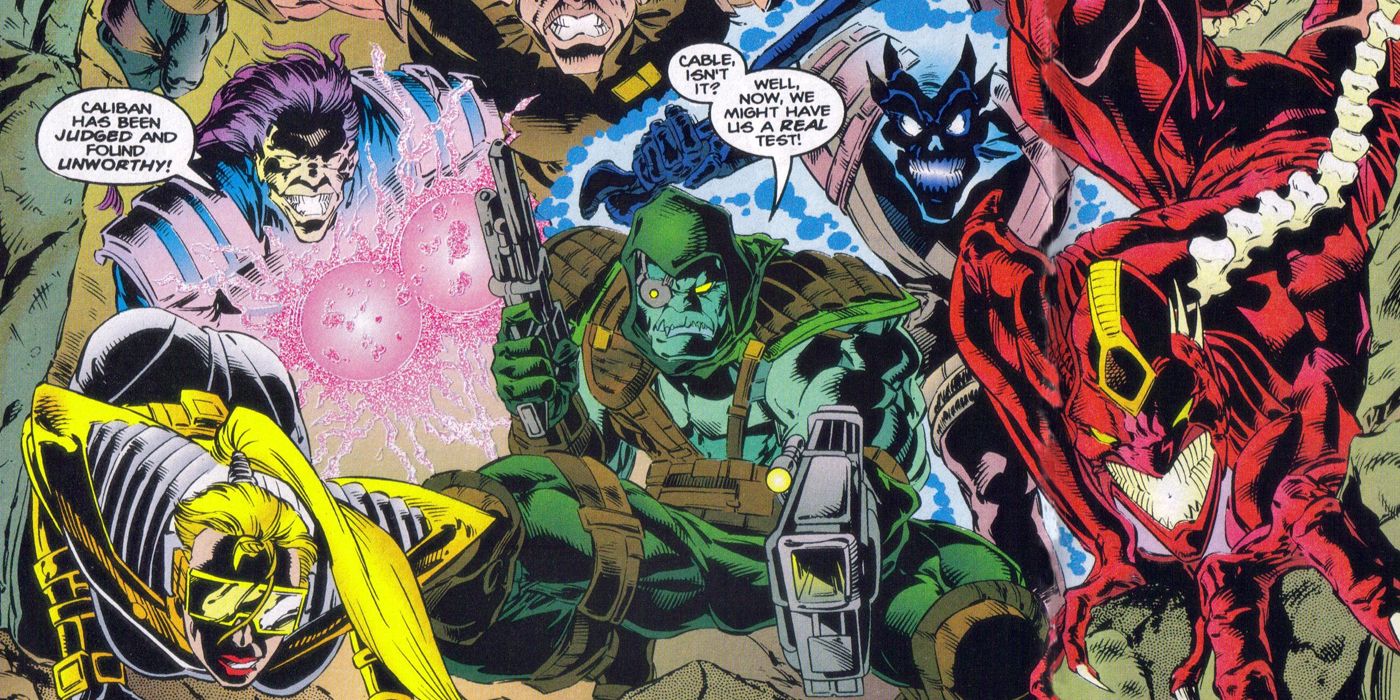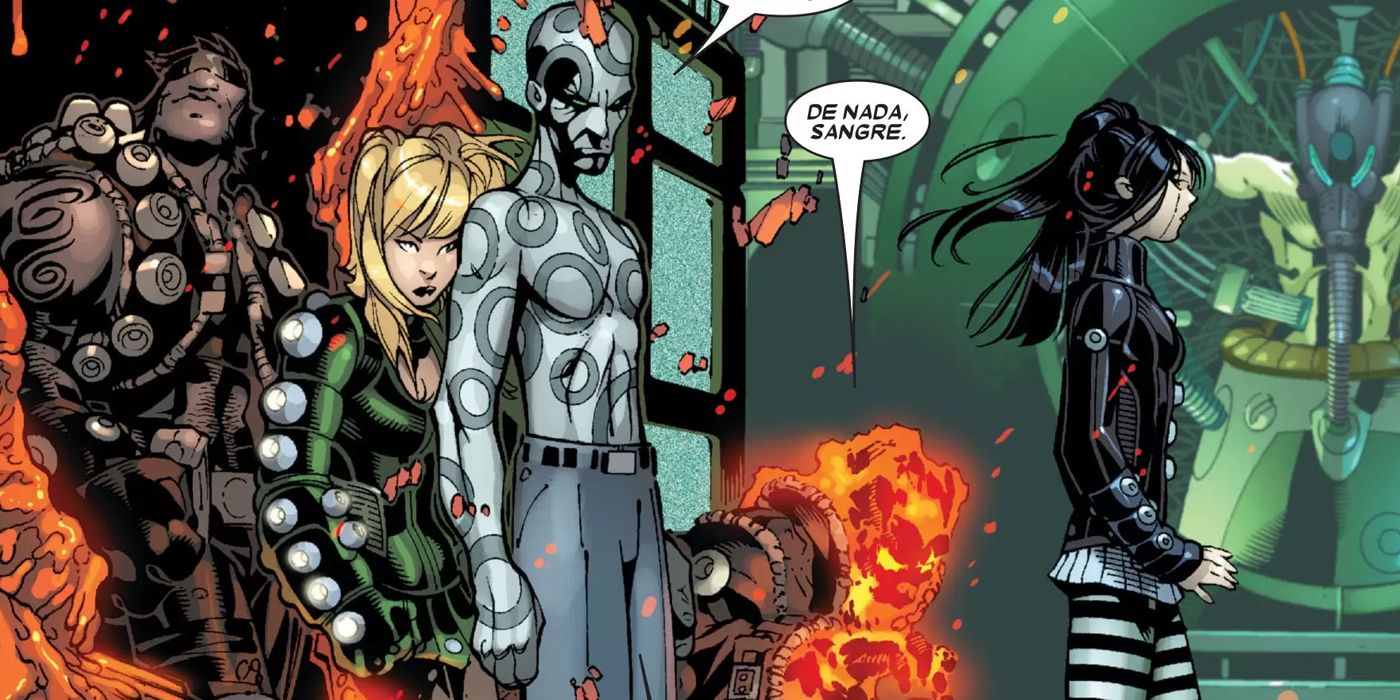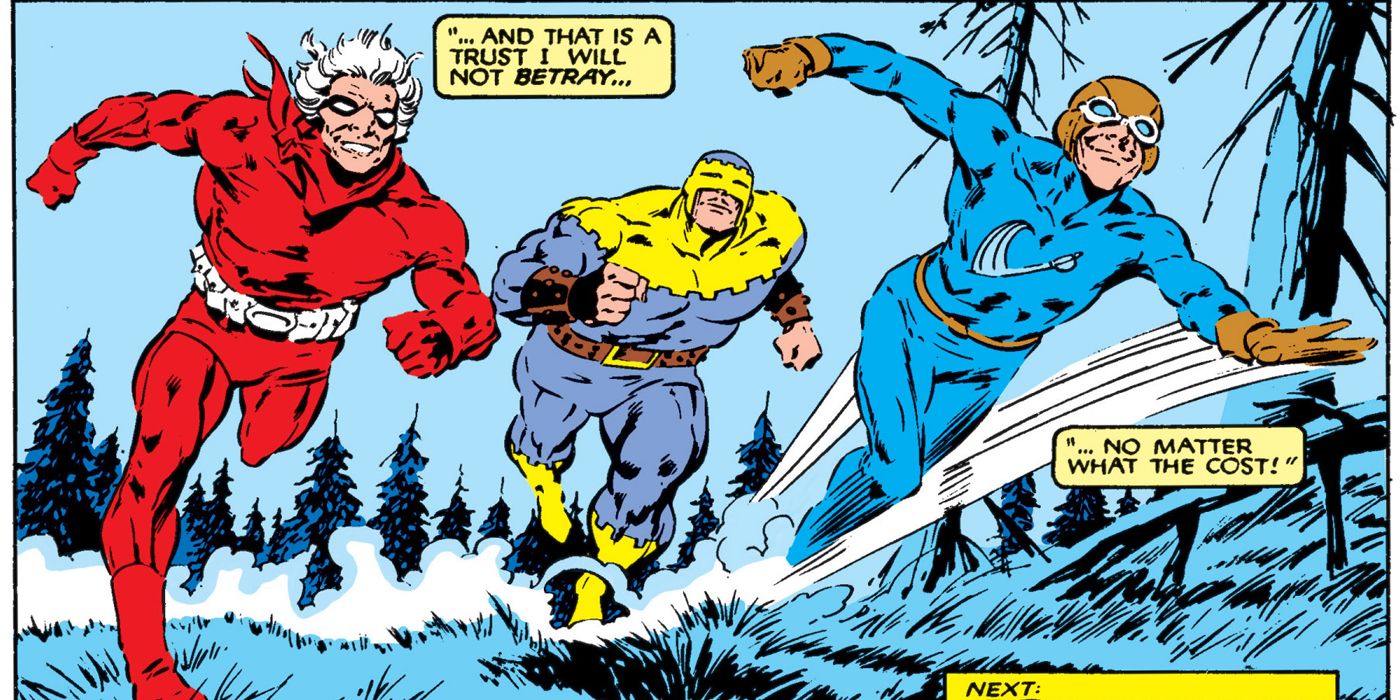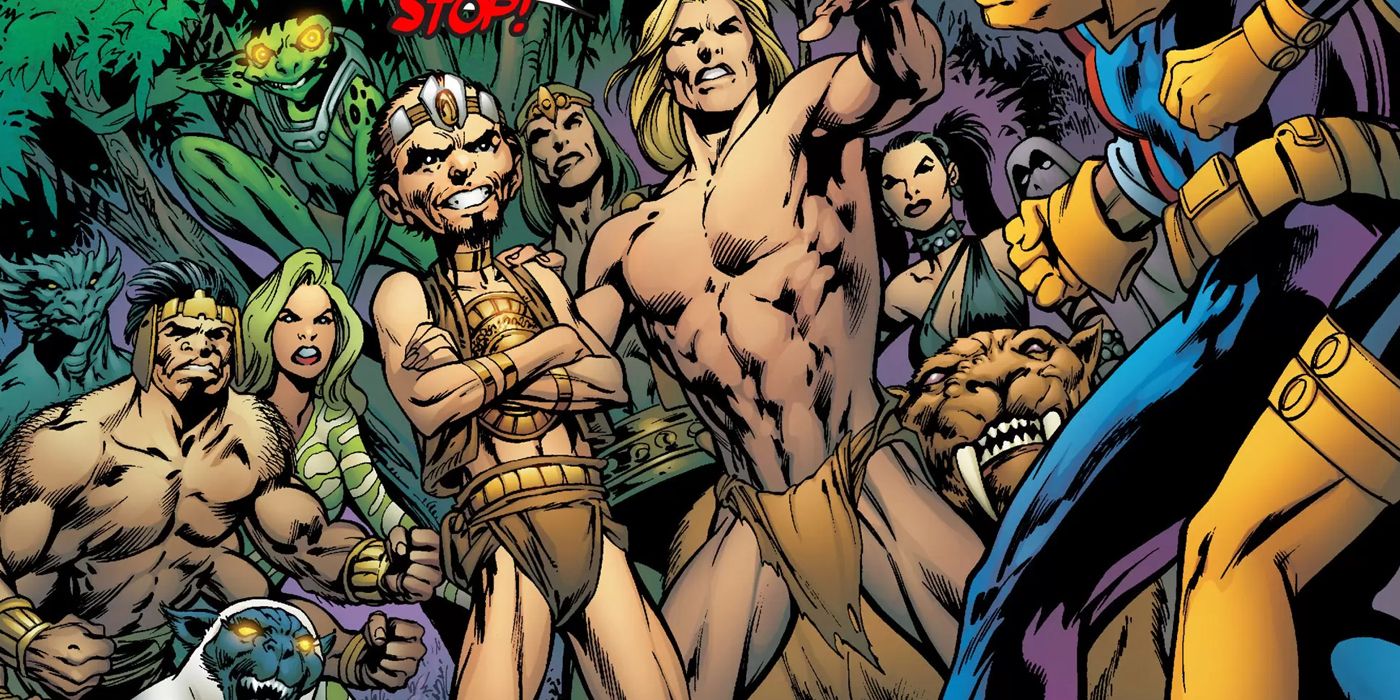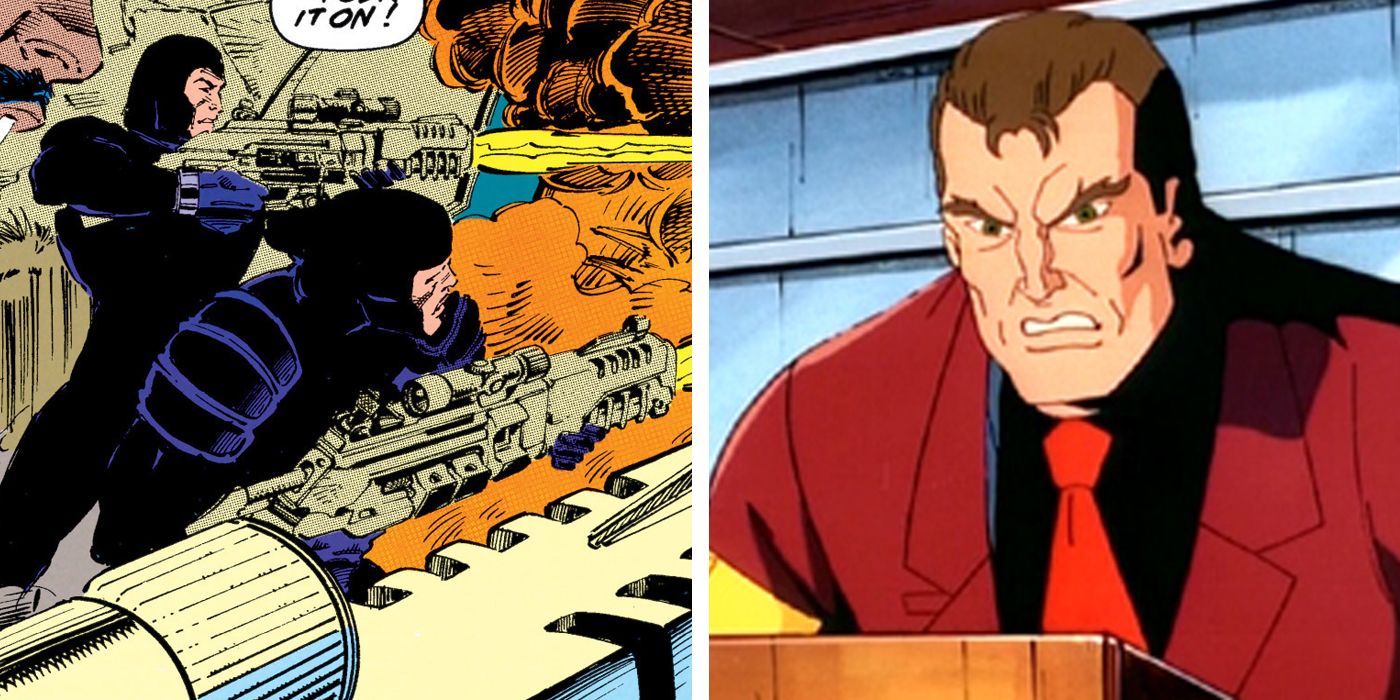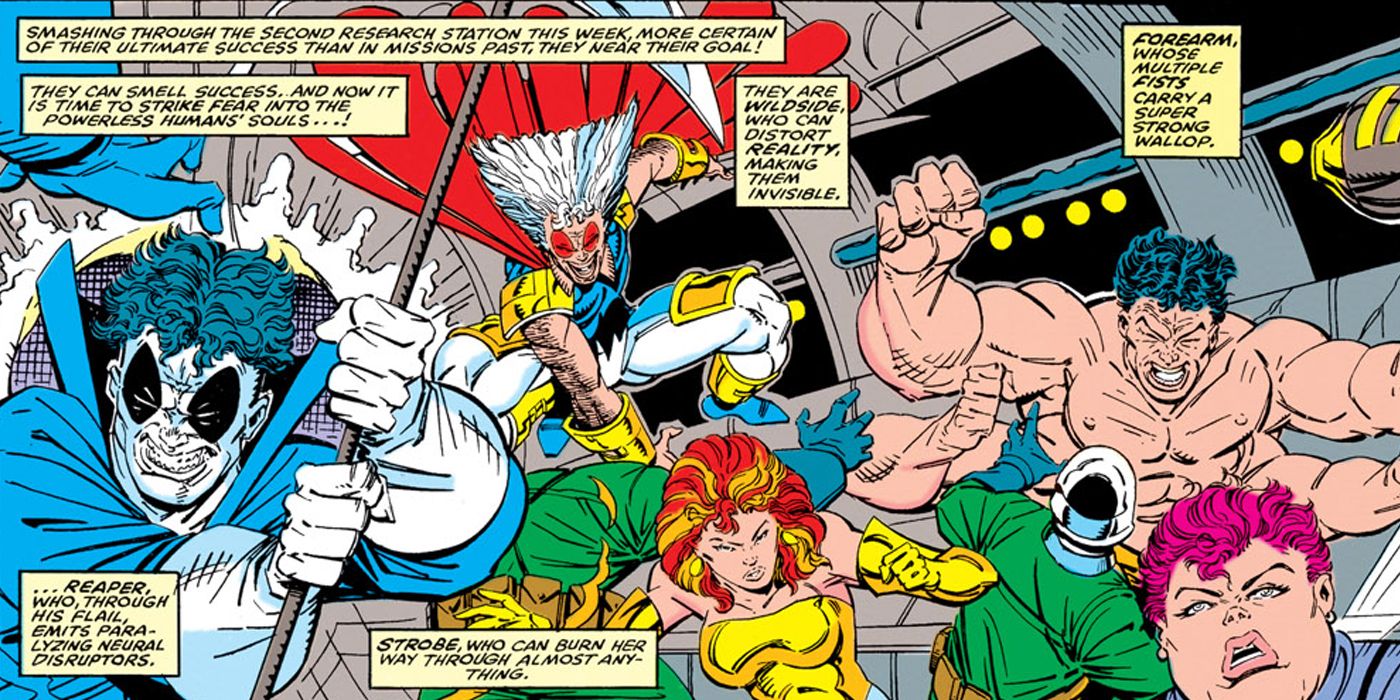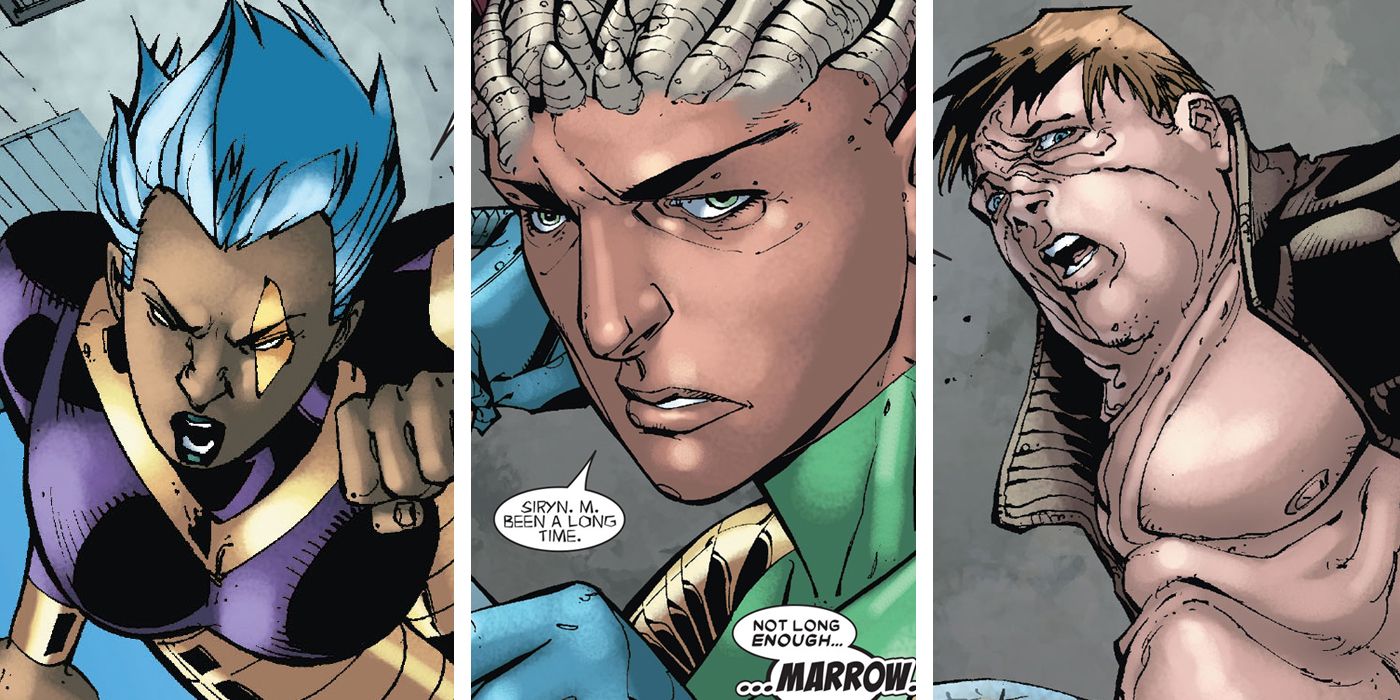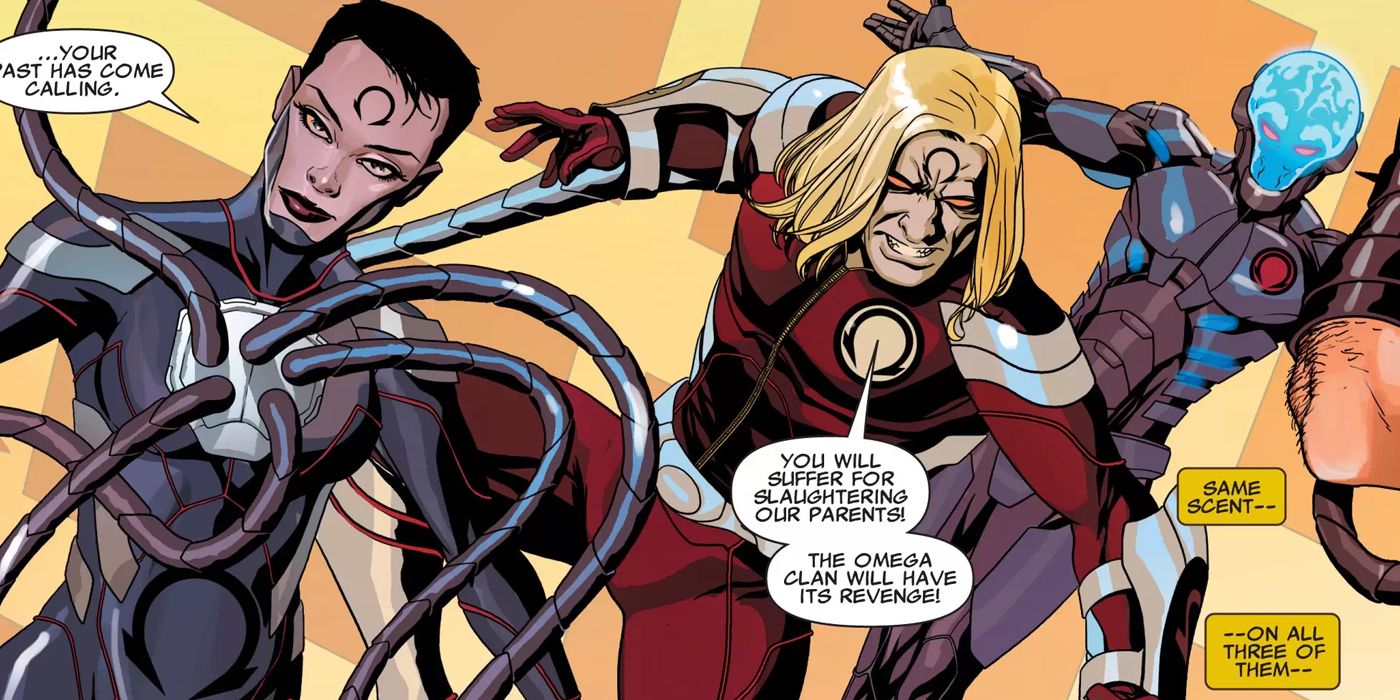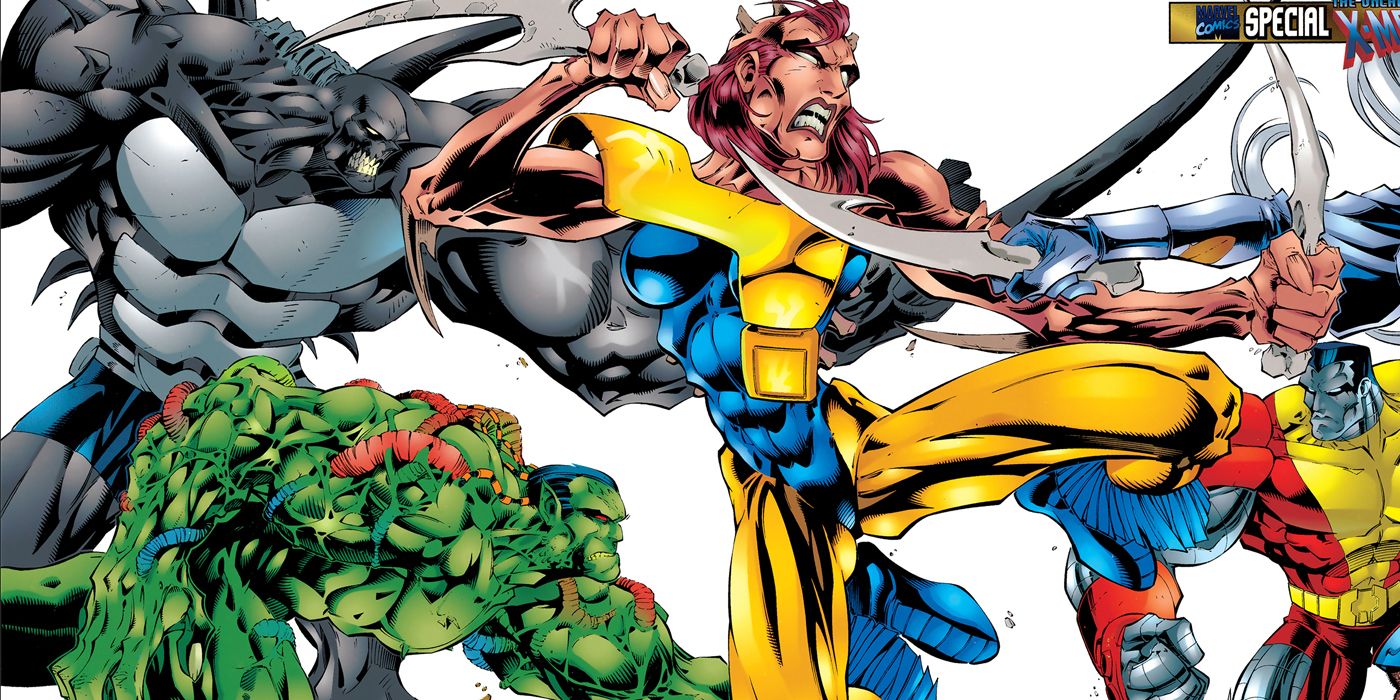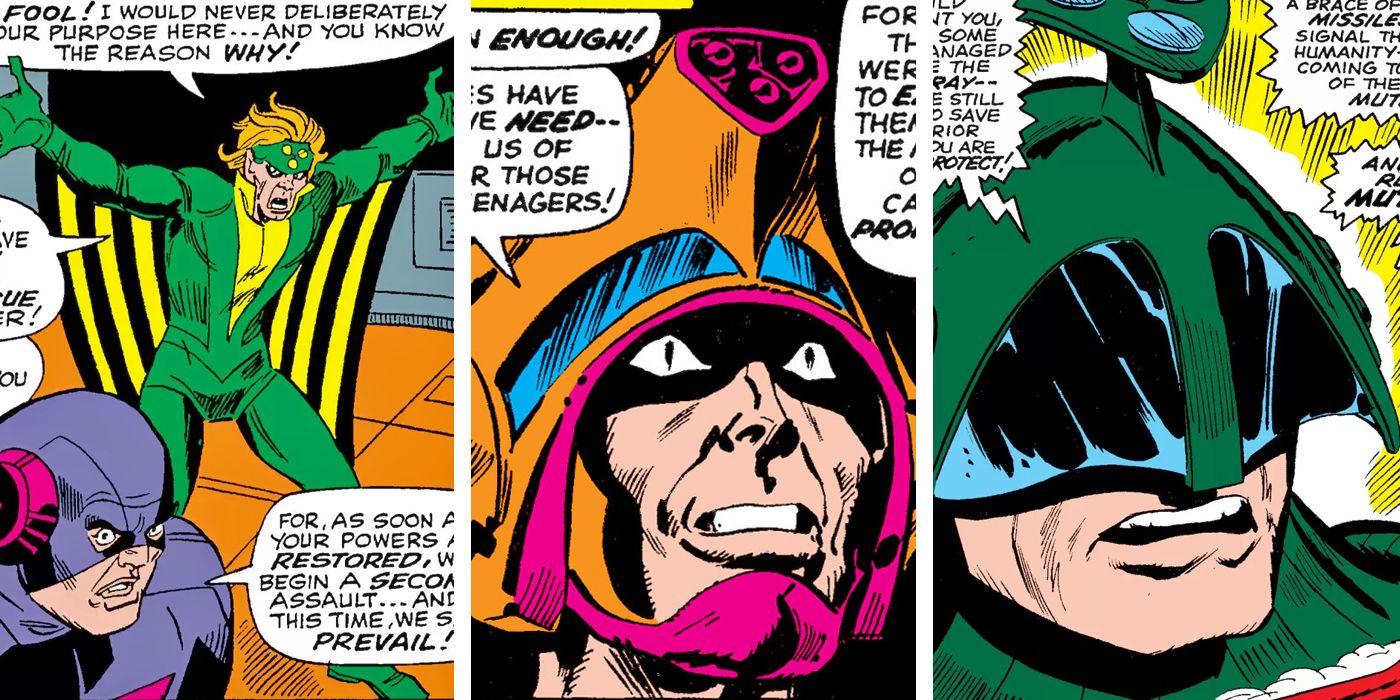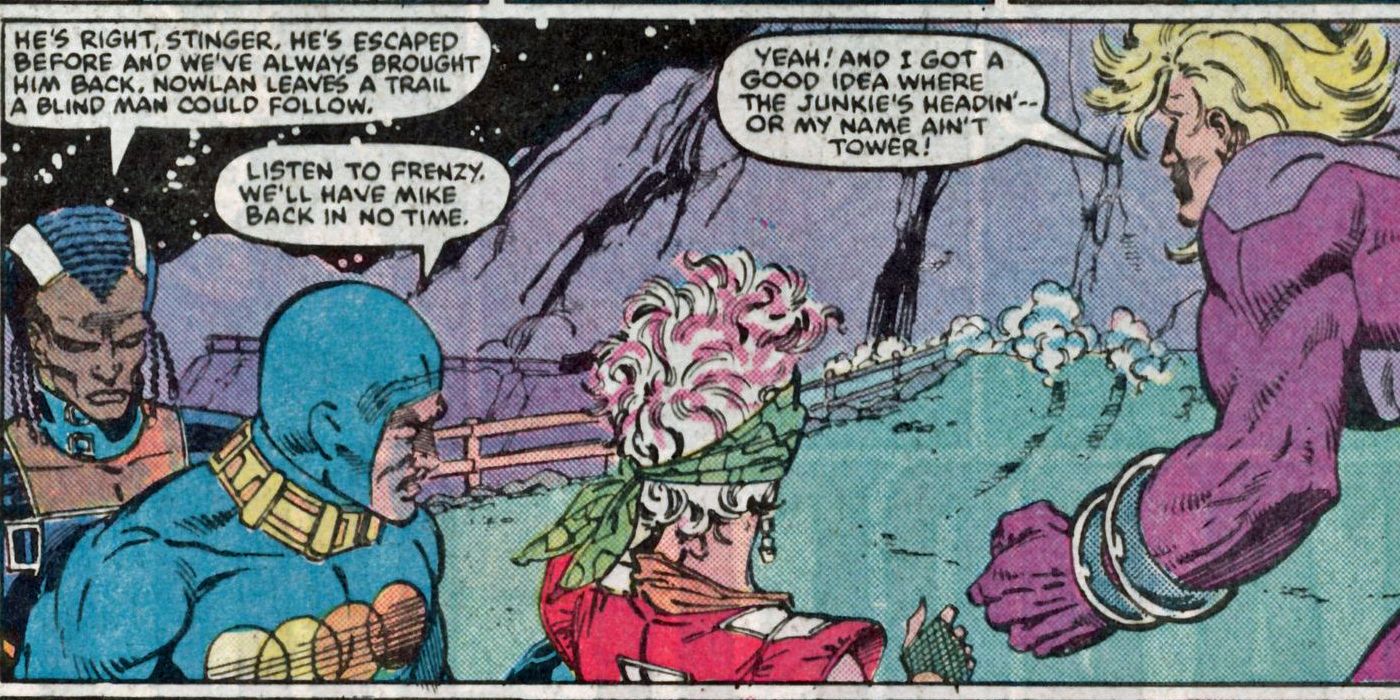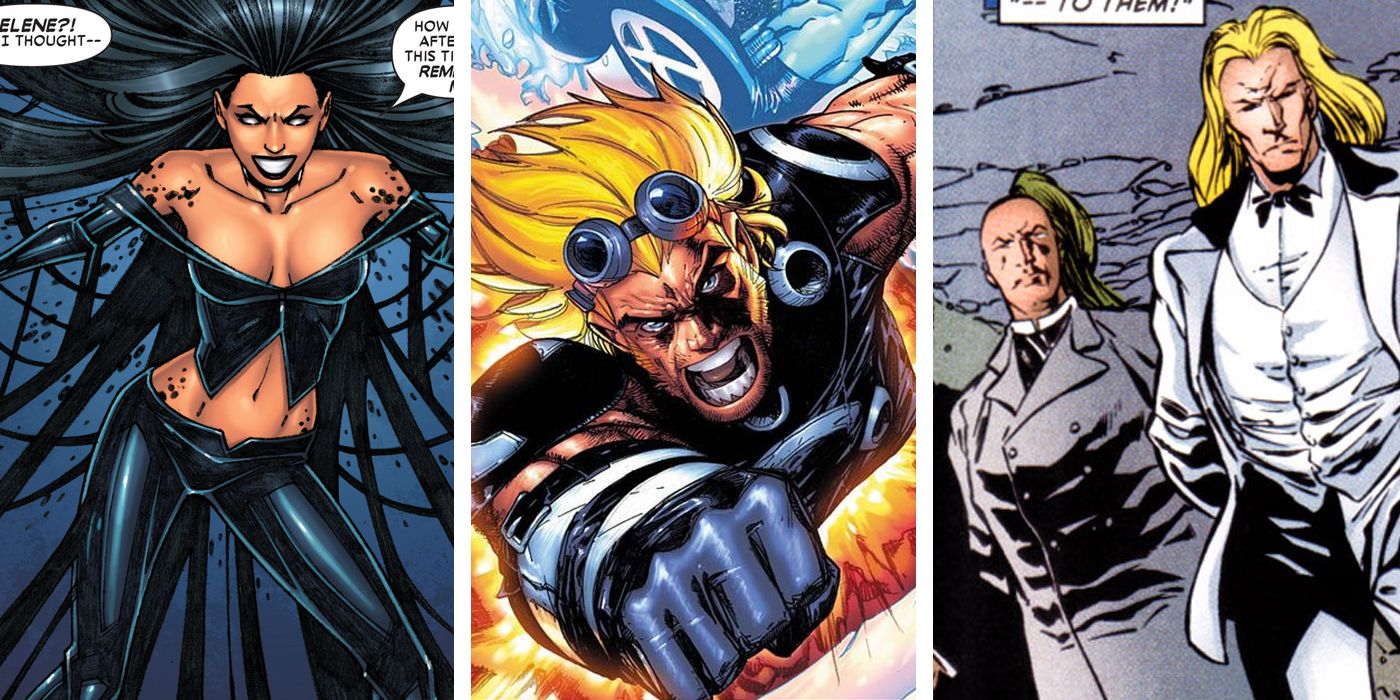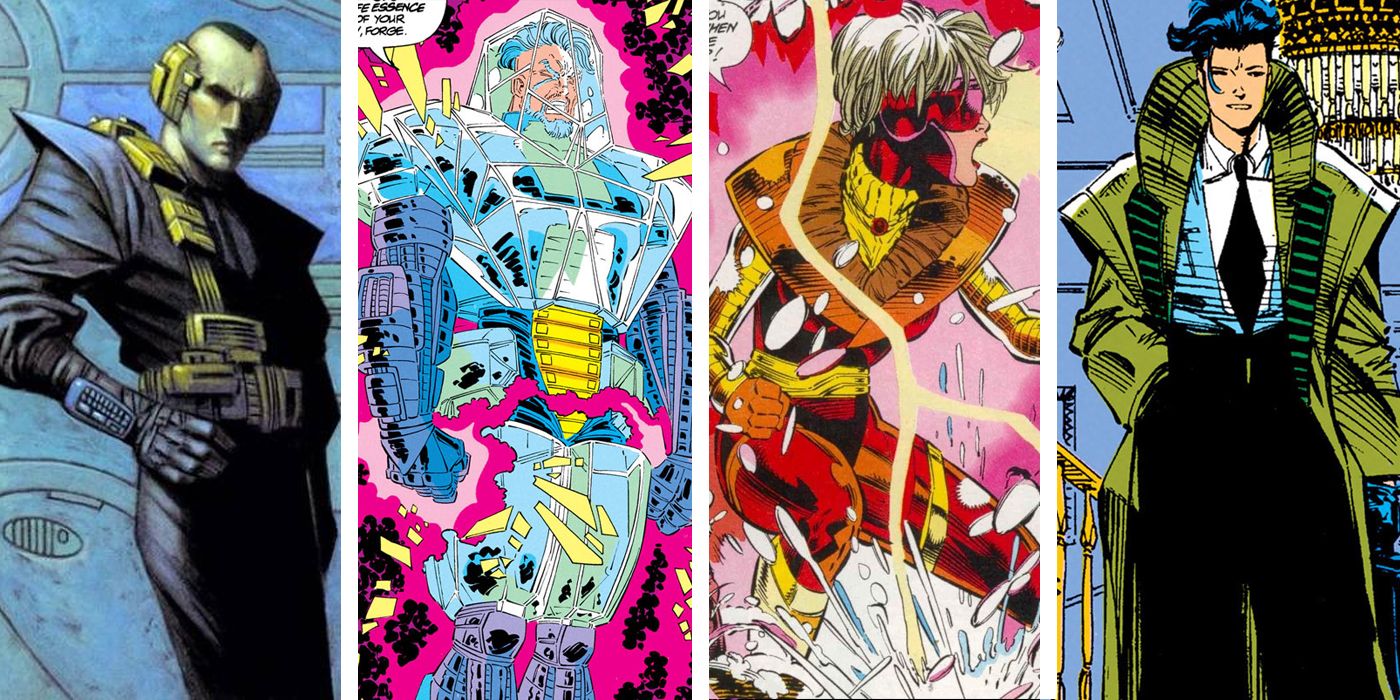The X-Men are in the middle of the biggest multimedia push they’ve had in years. In television and film, “Logan” and “Legion” seem set to introduce a more mature version of Marvel's merry mutants to the general public. Meanwhile, the "ResurrXion" relaunch seems set to give the entire line of X-Men comic books a fresh start that recalls the franchise’s most famous era.
RELATED: X-Factors: 16 X-Men Teams You Totally Forgot About
While the X-Men and their allies seem to have several new starring roles, many of their villains haven’t been seen in years. Now, CBR is taking a look back at the X-villain teams you totally forgot about. For this list, we’ll be looking, in no particular order, at X-villain teams that disappeared right after their debut, haven’t been seen in ages or went for decades between appearances.
16 THE ACOLYTES
Magneto’s Acolytes debuted in the highest-selling comic book of the modern age, 1991’s “X-Men” #1 by Chris Claremont, Jim Lee and Scott Williams. Throughout the following decade, the Acolytes remained fiercely loyal to Magneto’s dream of mutant supremacy. Besides Magneto, the mutant power enhancer Fabian Cortez and the powerful mutant Exodus both led factions of the team for a time. Although the group usually operated from the space stations Asteroid M and Avalon, its many members had an unusually high mortality rate.
The Acolytes are noteworthy for having a number of former X-Men in their roster, too. After the death of his sister Illyana, Colossus briefly joined the team and tried to temper their methods before returning to the X-Men. Skids and Rusty Collins, two former allies of X-Factor and the New Mutants, also joined one incarnation of the team. The Acolyte Frenzy eventually became a close associate and occasional member of the X-Men. Despite their presence on the '90s X-Men animated series and in major events, the team hasn’t made a major appearance for the better part of a decade.
15 NASTY BOYS
The Marauders, a mutant assassin squad that worked for the villain Mr. Sinister, were responsible for one of the biggest events in X-Men history, the “Mutant Massacre.” While that team has gone up against the X-Men on numerous occasions over the past three decades, they never appeared on “X-Men: The Animated Series.” Instead, the relatively obscure Nasty Boys served as Mr. Sinister's strike force on that show.
The Nasty Boys were created by Peter David, Larry Stroman and Al Milgrom in 1992’s “X-Factor” #75. The team included the sonic screamer Ruckus, the bestial Hairbag, the super-strong Slab, the wood-controlling Ramrod and the elastic tar-slinging Gorgeous George. While they were semi-regular foes on the cartoon, the group only had a few encounters with the government-sponsored X-Factor team in the 1990s before disappearing. In 2016, the X-Men forcefully took Ruckus and Ramrod into their custody. Later that same year, the X-Man Psylocke broke up a mutant drug ring that was being run by Gorgeous George, Slab and Hairbag.
14 THE NEO
In 2000, legendary X-Men writer Chris Claremont returned to the franchise he helped define for the first time in almost a decade in the “Revolution” relaunch. While that effort would flounder after less than a year, Claremont and Lenil Yu made a minor contribution to X-Men history with the introduction of the Neo in 2000’s “X-Men” #100. Unlike most of the other groups on this list, the Neo were a powerful subspecies of mutant that largely lived apart from the rest of the world.
The Neo were divided into various groups like the Warclan, Lost Souls, Crimson Pirates and the Goth. Although the Neo went largely unseen for a decade after their debut, they were said to have had a reputation as powerful warriors that lasted centuries into the future. In 2011, another group of Neo appeared at the beginning of the almost-forgotten “First to Last” story arc. Almost all of the Neo were exterminated by an ancient race of beings called the Evolutionaries, but a group of Crimson Pirates survived in another dimension.
13 DARK RIDERS
While the Inhumans and mutants haven’t been getting along well lately, the Dark Riders were one of the few teams with members from both species. The group, originally called the Riders on the Storm, debuted after Apocalypse conquered the Inhumans’ home Attilan in 1991’s “X-Factor” #65, by Chris Claremont, Jim Lee, Whilce Portacio and Art Thibert. Although the team’s devotion to Apocalypse has wavered over the years, they have remained dedicated to his cause of the “survival of the fittest.”
While the Dark Riders’ membership has fluctuated over the years, the Inhuman mercenary Gauntlet and the monstrous mutant Spyne are among its most distinctive members. In addition to Apocalypse, the team has served Stryfe, Cable’s evil clone from the future, and Genesis, Cable’s evil son from the future. While the team had been absent for over 15 years, the Dark Riders reappeared in Cullen Bunn, Greg Land and Jay Leisten’s “Uncanny X-Men” in 2016. When the Inhumans’ power-bestowing Terrigen Mist started killing mutants around the world, the group tried to kill several mutants with healing powers in an effort to help encourage the process of natural selection.
12 CHILDREN OF THE VAULT
Like the Neo, the Children of the Vault are from a race of super-powered beings that developed in seclusion. Created by Mike Carey, Chris Bachalo, Jaime Mendoza and Tim Townsend in 2006’s “X-Men” #188, the Children of the Vault believed that they were the next step in human evolution. Their offshoot of humanity evolved over 6,000 years during a time acceleration experiment. On a ship called the Conquistador off the coast of Chile, approximately 3,000 members of the species developed various super-powers.
Due to their South American origin, each member of the Children of the Vault had a name derived from Spanish. Sangre, their leader, could control water, Fuego could control fire and Serafina was a technopath who could work with machinery and molecular data. After framing the X-Men for an attack in Mexico, several members of the team apparently died. In 2010, another group of Children of the Vault fought the X-Men in India, but they haven’t appeared since this conflict.
11 THE OLD SOLDIERS
In 1987’s “Uncanny X-Men” #215, Chris Claremont, Alan Davis and Dan Green introduced an unnamed trio of super-powered veterans who hunted criminals for sport. In a story called “Old Soldiers,” Crimson Commando, Super Sabre and Stonewall were introduced as former WWII-era soldiers who were forced into retirement by the American government. Disgusted by rampant criminal activity, the group started kidnapping criminals and hunting them in the forests of the Adirondacks. After being beaten in combat by Storm, the group joined the government-sponsored team Freedom Force along with X-Men foes Mystique, Pyro and Avalanche.
While they were in Freedom Force, the group fought the X-Men multiple times and briefly teamed-up with them. Stonewall died on a mission to help the X-Men defend Muir Island from the cybernetic mercenaries the Reavers. In a later adventure, the Iraqi super-team Desert Sword killed Sabre and maimed Commando. Commando was given cybernetic implants after this mission and fought the X-Men oa few more times. After losing his powers, Commando started dying when his body began rejecting his implants, and he was ultimately killed by Wolverine.
10 SAVAGE LAND MUTATES
The Savage Land is one of the most unique places in all of the Marvel Universe. Even though it’s hidden in Antarctica, the Savage Land has a tropical climate where dinosaurs and pre-historic humans live together. Magneto genetically altered some of these humans and gave them powers, turning them into the Savage Land Mutates. After their debut in 1969’s “X-Men” #62, by Roy Thomas, Neal Adams and Tim Palmer, the Savage Land Mutates became regular adversaries to the X-Men and their allies whenever the heroes traveled to the Savage Land.
Besides Magneto, the Mutates’ leaders have included the monstrous energy vampire Sauron, the sorceress Zaladane and the psychic mutate Brainchild. Some of the group’s more notable members include the four-armed Barbarus, the frog-like Amphibius and Vertigo. Vertigo, who had the ability to cause extreme disorientation, joined Mr. Sinister’s Marauders and helped kill several Morlocks during the “Mutant Massacre.” Later, she returned to the Mutates, who briefly teamed up with the X-Men and the hero Ka-Zar in 2005.
9 FRIENDS OF HUMANITY
While there’s no shortage of anti-mutant organizations in the Marvel Universe, the Friends of Humanity might be the most famous. The group made their debut in 1992’s “Uncanny X-Men” #291, by Scott Lobdell, Tom Raney and Hilary Barta. The Friends of Humanity were founded by Graydon Creed, the human son of Sabretooth and Mystique. While Creed held rallies and tried to foster anti-mutant hysteria in the general public, other parts of the group dealt with more covert operations like kidnapping and attacks.
Eventually, Creed ran for president on a wave of anti-mutant sentiment. On the night before the election, Creed was assassinated by his own mother, Mystique, and the Friends of Humanity splintered. While Creed came back to life years later, other anti-mutant hate groups like the Purifiers had taken their place in the Marvel Universe. Despite that, the Friends of Humanity were the face of anti-mutant sentiment in the 1990s X-Men cartoon, where they were regular antagonists and responsible for the creation of a mutant plague.
8 MUTANT LIBERATION FRONT
Although the Mutant Liberation Front was an integral part of some of the biggest X-Men stories of the 1990s, the group didn’t have the staying power of teams like the Brotherhood of Evil Mutants. The MLF debuted in 1990’s “New Mutants” #86, by Rob Liefeld, Louise Simonson and Bob Wiacek. Stryfe, the evil Cable clone from the future, founded the group in the modern day in order to fight for mutant supremacy and strike back against humanity. After Stryfe was defeated, the group reformed under the leadership of Reignfire, a clone of the New Mutant and X-Force member Sunspot.
Both versions of the MLF included some of the same members like the reality-warping Wildside, the scythe-wielding Reaper, the time-controlling Tempo and the four-armed Forearm. The former X-allies Skids and Rusty Collins were also brainwashed by Stryfe into serving in the first MLF. Former X-Force member Feral joined the second incarnation, as did the X-Man Dani Moonstar, who was spying on the group for S.H.I.E.L.D. Although a few other groups have used the name, the main MLF has remained inactive since 1997’s “Operation: Zero Tolerance” crossover.
7 X-CELL
In 2005’s “House of M” crossover, the Scarlet Witch infamously depowered most of the world’s mutants. This infamous incident shaped a decade of X-Men stories and dramatically redefined the Marvel Universe. One of the groups that popped up in the wake of that event was X-Cell. The group made their debut in 2007’s “X-Factor” #17, by Peter David, Khoi Pham and Sandu Florea, and was largely made up of former mutant villains who believed that the government had a role in depowering mutants.
Led by the previously unseen mutant Elijah Cross, the team attacked government figures and came into conflict with X-Factor Investigations. In addition to Cross, the team’s members included the assassin Fatale, Reaper, the Blob, Abyss, Callisto and the former X-Man Marrow. In one of his more villainous moments, the X-Man and Avenger Quicksilver used Inhuman Terrigen Crystals to repower some of the team. After Cross spontaneously combusted, Abyss, Fatale and Reaper jumped into another dimension before they exploded.
6 OMEGA CLAN
After Wolverine killed Omega Red in 2009, an organization called the White Sky was contracted to develop three clones from the longtime X-villain’s remains. The team of assassins made their debut in 2012’s “Uncanny X-Force” #25, by Rick Remender and Mike McKone. Omega White could create energy constructs and become intangible, and Omega White possessed disease-giving tendrils. The last member of the team was essentially a direct clone of Omega Red, who possessed his forerunner’s life force-draining tentacles.
After being implanted with fake memories, the team fought a black-ops incarnation of X-Force. As part of a new incarnation of the Brotherhood of Evil Mutants, the Omegas tried to turn the young Evan Sabahnur into a new Apocalypse. In the ensuing conflict, both Omega Red and Omega White seemingly died. Omega Red resurfaced a short time later as a mercenary and fought Deadpool in 2015. Omega Black also resurfaced that same year, serving as a host for the psychic entity, the Black King.
5 GENE NATION
Even by X-Men standards, the sewer-dwelling Morlocks have had a particularly troubled history. After droves were killed during the “Mutant Massacre,” Mikhail Rasputin, Colossus’ dimension-hopping brother, briefly went mad and sent a group of Morlocks into another dimension called the Hill. Rasputin set himself up as the king of that dimension and forced them to fight each other for the right to live. After a group of Morlocks returned to the main Marvel Universe, they became known as the Gene Nation and sought to kill humans and weaker Morlocks.
In 1995, the Gene Nation made their debut concurrently in “Uncanny X-Men” and “Generation X,” both of which were being written by Scott Lobdell at the time. The team’s members included the spiky Hemingway and the spirit-absorbing Vessel, but the group’s most notable member was their leader, the future X-Man, Marrow. After being defeated by the X-Men, the group disbanded and Marrow began her reform. The X-villain Dark Beast briefly reformed the group and fought the teen X-team Generation X. Marrow reformed Gene Nation one more time in order to fight a revived Weapon X program, but most of the team was ultimately slaughtered.
4 FACTOR THREE
The origins of Factor Three date back to some of the X-Men’s earliest days. Created by Roy Thomas, Werner Roth and Dick Ayers in 1967’s “X-Men” #28, the existence of the group was first hinted at when the mercenary Ogre and the mind-controlled Banshee were sent to kidnap Professor X. The X-Men defeated the pair and freed Banshee. After a second attempt to kidnap Professor X proved successful, Banshee and the X-Men teamed up to rescue their leader and stop Factor Three from starting a nuclear war between the United States and the Soviet Union.
Factor Three was led by the shape-shifting Changeling and the would-be world conqueror the Mutant Master, and included other villains like the Blob and Unus the Untouchable. After fighting the X-Men, the rest of Factor Three turned on the Mutant Master when they discovered that he was an octopus-like alien from Sirius. After teaming up with the X-Men to defeat the alien, the group disbanded. Shortly after, Changeling reformed but died unmourned while impersonating Professor X.
3 ALLIANCE OF EVIL
While Apocalypse’s Four Horsemen might be the ancient villain’s most famous henchmen, the Alliance of Evil worked for Apocalypse in his earliest appearances. Created by Bob Layton and Jackson Guice in 1986’s “X-Factor” #5, the Alliance of Evil was a team of mercenary mutants who worked for the highest bidder. The group included the super-strong Frenzy, the size-changing Tower, the time-shifting Timeshadow and the electric Stinger.
In their first appearance, the group kidnapped a power-enhancing mutant named Michael Nowlan for Apocalypse. After Nowlan died and the Alliance lost a battle with the first incarnation of X-Factor, Apocalypse left the team behind and started recruiting the mutants who would become his first modern Horsemen. A few years later, the Alliance was arrested after a fight with X-Factor. Participating in a plot to recreate the reality warping villain Proteus, the group fought the New Mutants and disbanded. Both Frenzy and Striker became allies of the X-Men, while Tower was eventually killed by the mutant-hunting X-Cutioner.
2 THE EXTERNALS/THE HIGH LORDS
One of the long-running X-franchise subplots of the 1990s concerned the Externals. Created by Rob Liefeld, Fabian Nicieza and Mark Pacella in 1992’s “X-Force” #10, the Externals were a powerful group of mutants who were thought to be immortal. The group included new characters like the villains Crule and Absalom and some more established characters like the X-Force member Cannonball, the villain Gideon and Selene, a psychic vampire and Black Queen of the Hellfire Club. Although Apocalypse’s status as an External was left unclear, the group was said to have played an important role in his rise to power in Cable’s home timeline.
While the difference between these two groups was also somewhat unclear, most of the villainous Externals were also members of a smaller group called the High Lords. Despite their supposed longevity, every member of this group was killed by the Legacy Virus (a mutant plague), or by Selene, who sustained herself on others’ life force. While Cannonball’s status as an immortal has come into question, he has survived fatal wounds, healed from injuries at an accelerated rate and remains the only External who hasn’t died.
1 THE UPSTARTS
Several of the X-Men’s newer villains banded together to form the Upstarts, a group of wealthy young villains who made a game out of killing other mutants. The group was initially founded by Selene in order to help her bring new, more powerful members into the Hellfire Club. Starting in 1991’s “Uncanny X-Men” #281, by Jim Lee, Whilce Portacio, John Byrne and Art Thibert, points were awarded for killing specific mutants and Selene promised immortality to whomever killed the most important mutants. The Gamesmaster, a telepath driven to the brink of insanity by his connection to every mind in the world, served as the competition's referee.
The group’s roster included Sebastian Shaw’s son Shinobi Shaw, the Acolyte Fabian Cortez, the life-draining time-traveler Trevor Fitzroy, and the electromagnetic-field wielding Sienna Blaze. Although their competition didn’t last for long, the group was responsible for the deaths of the Hellions, a teen team, and the longtime Hellfire Club members Sebastian Shaw and Donald Pierce. After the group kidnapped several young mutants, the Gamesmaster lost interest in the competition and called it off. The Upstarts split up and all of the group's members eventually died or fell into obscurity.
Stay tuned to CBR for all the latest on the X-Men. Be sure to let us know what your favorite X-villain group is in the comments below!

